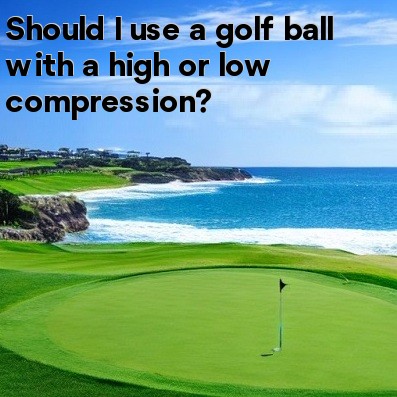
In Golf, Should I Use a Golf Ball with a High or Low Compression?
One of the key factors to consider when choosing a golf ball is its compression. Compression refers to the density of the ball and its ability to compress upon impact with the clubface. The compression rating of a golf ball can have a significant impact on your game, affecting your distance, control, and overall performance on the course.
So, should you use a golf ball with a high or low compression? Let's explore the advantages and disadvantages of each:
High Compression Golf Balls
- Distance: High compression golf balls are generally designed for players with faster swing speeds. Due to their dense construction, these balls tend to generate more distance off the tee. If you have a powerful swing, a high compression ball can help you maximize your distance.
- Control: High compression balls are less likely to deform upon impact, resulting in a more consistent ball flight. This can provide better control and accuracy, particularly for skilled players who can generate sufficient clubhead speed.
- Feel: Some golfers prefer the solid feel of high compression balls, as they can offer a crisp and responsive sensation at impact. This can be especially rewarding for players who prioritize ball feedback.
However, high compression golf balls may not be suitable for everyone:
- Slower Swing Speeds: If you have a slower swing speed, a high compression ball may feel harder and more challenging to compress. This can result in a loss of distance and a decrease in overall performance.
- Less Forgiving: High compression balls require a precise strike to achieve optimal results. If your ball-striking consistency is not at an advanced level, you may find it harder to control the ball and maintain consistency.
Low Compression Golf Balls
- Distance: For players with slower swing speeds, low compression golf balls are a great option. These balls are designed to compress easily, allowing for increased distance even with slower swings.
- Soft Feel: Low compression balls generally offer a softer feel upon impact, which can be more enjoyable for some players.
- Forgiveness: Due to their ability to compress more easily, low compression balls can be more forgiving on mishits. They tend to have a larger sweet spot, resulting in less distance loss and better overall consistency.
While low compression golf balls have their advantages, there are a few considerations to keep in mind:
- Higher Spin: Low compression balls tend to spin more, especially with short irons and wedges. This can be beneficial for skilled players who can control their spin, but it may require adjustments if you prefer a different spin profile.
- Reduced Control: Due to their softer feel, low compression balls may not offer the same level of control as higher compression options. If you prioritize control over distance, a high compression ball might be a better choice.
In summary, the choice between using a high or low compression golf ball depends on your swing speed, skill level, and personal preferences. Players with faster swing speeds and better control might benefit from using high compression balls, while those with slower swing speeds and a desire for more distance and forgiveness may prefer low compression balls. Ultimately, it's important to experiment and find the ball that suits your game the best.





